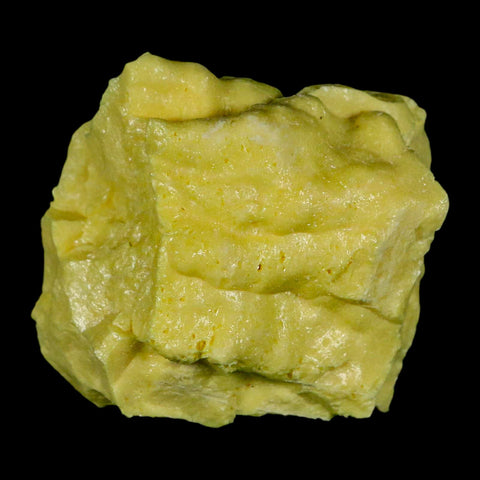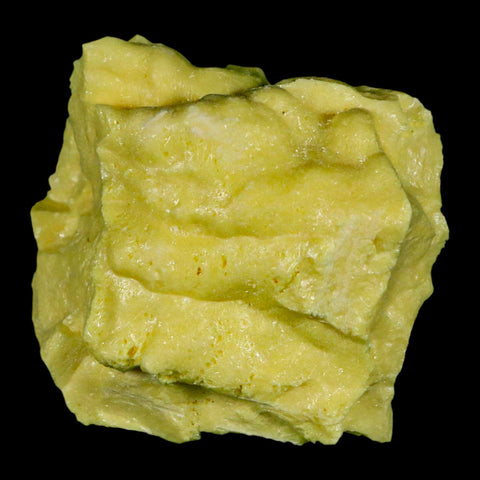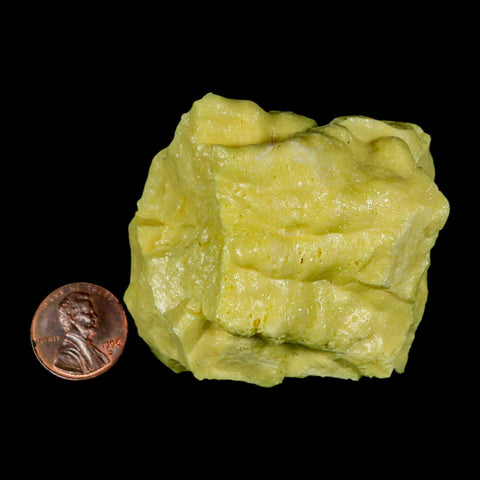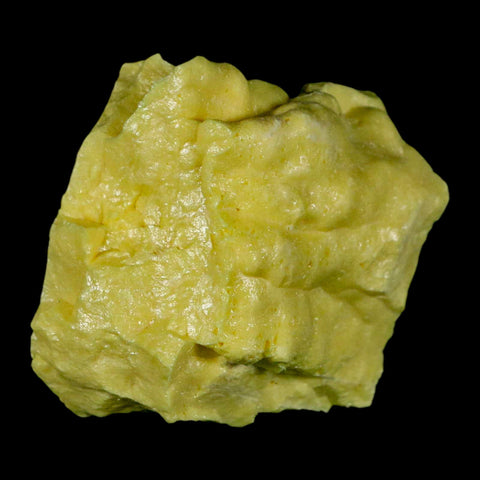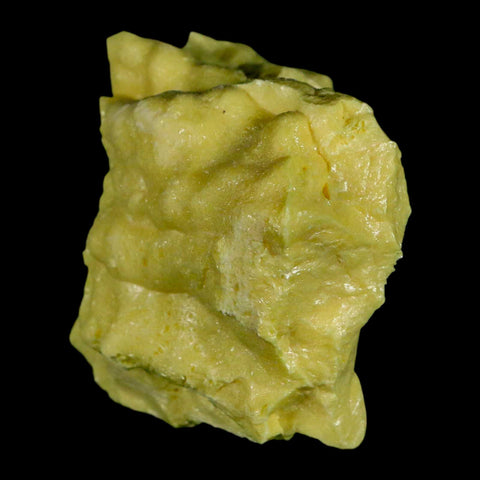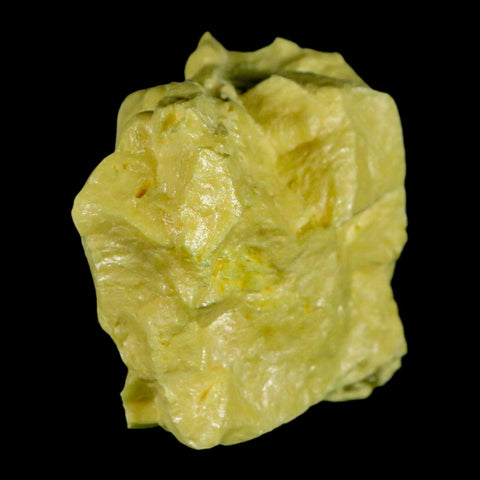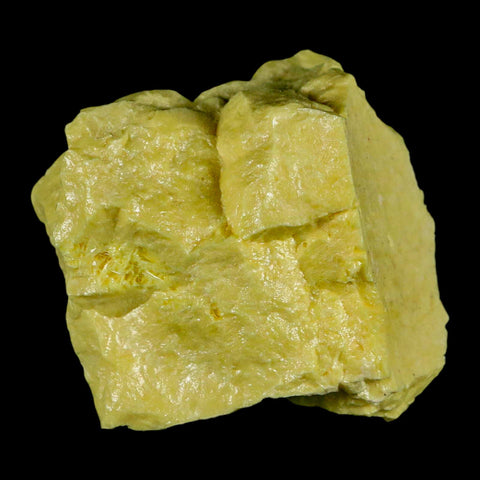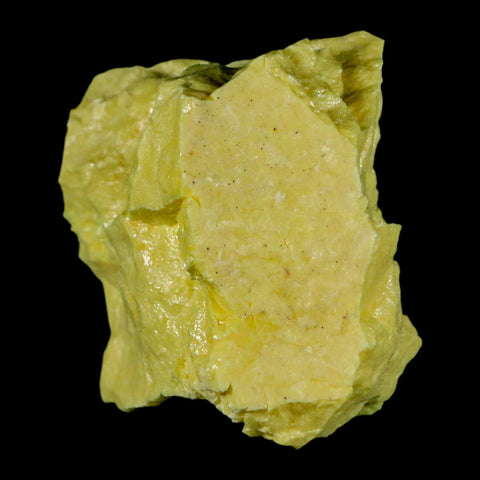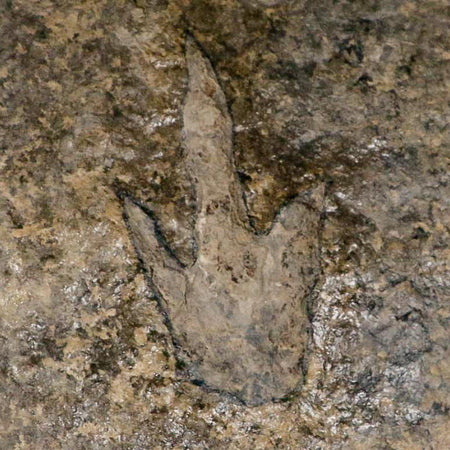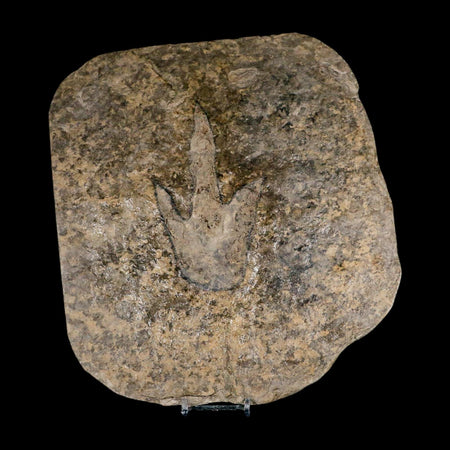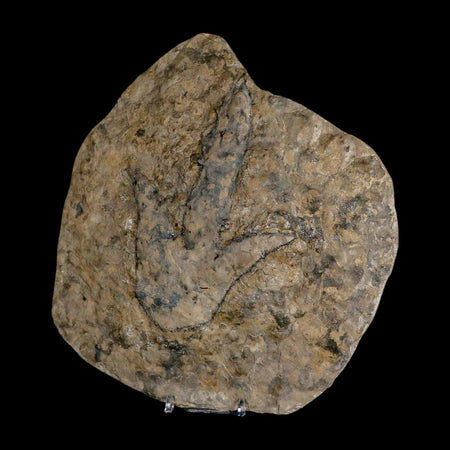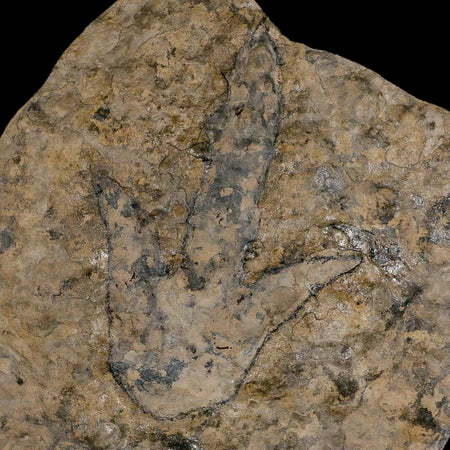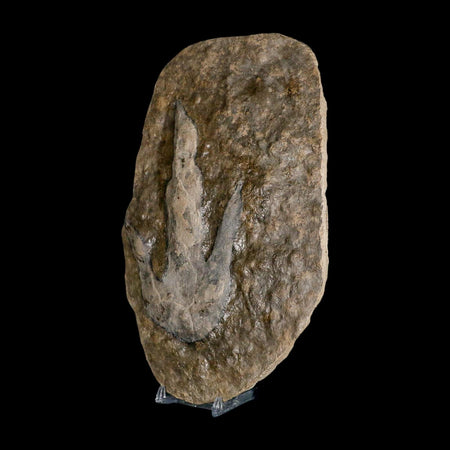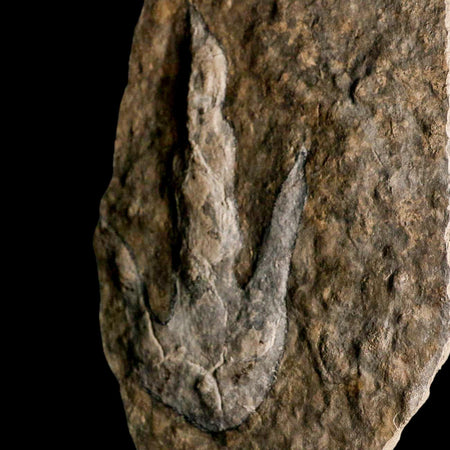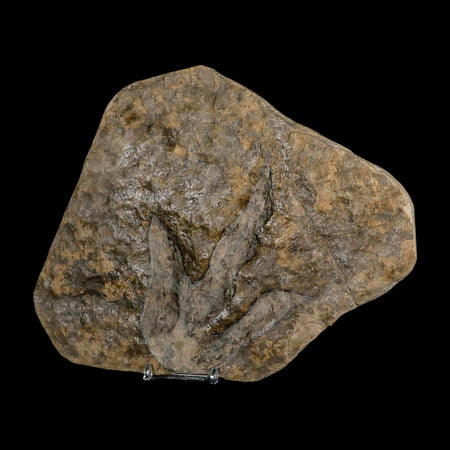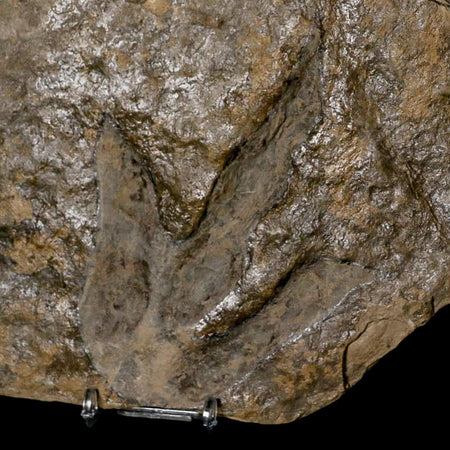2.2" Rough Bright Yellow Sulfur Crystal Mineral Specimen From Louisiana
Location: Sulfur, Louisiana, United States
Weight: 3.8 Ounces
Dimensions: 2.2 Inches Long, 2.1 Inches Wide, 1.5 Inches Thick
The item pictured is the one you will receive.
Sulfur, particularly native sulfur, has been historically significant in Louisiana due to its unique geological formation and economic importance. The sulfur deposits in Louisiana are primarily associated with the caprock of salt domes, a geological structure common in the Gulf Coast region.
The unique sulfur deposits of Louisiana were formed through a process known as bacterial sulfate reduction, in which bacteria reduce anhydrite (calcium sulfate) using hydrocarbons as an energy source. This reaction produces hydrogen sulfide, which then interacts with oxygenated groundwater to form elemental sulfur. This biogenic origin sets Louisiana’s sulfur apart from deposits created by volcanic activity or other geological processes.
Early attempts to mine these sulfur deposits were extremely challenging due to the unconsolidated sediments and quicksand overlaying the sulfur-bearing formations. The breakthrough came with the invention of the Frasch process by Herman Frasch, a method that revolutionized sulfur mining. This innovative technique involved injecting superheated water into the sulfur layer, melting the sulfur, and then pumping the molten sulfur to the surface using compressed air. The Frasch process made mining in these difficult geological conditions economically viable, establishing Louisiana as a major global sulfur producer for decades.
The high-purity sulfur, also known as "brimstone," was a critical raw material for industries producing sulfuric acid, fertilizers, chemicals, and explosives. Although direct sulfur mining in Louisiana has largely ceased due to economic factors and the availability of sulfur as a byproduct of natural gas processing, the historical and industrial significance of these deposits remains substantial. The Frasch process exemplifies innovative engineering overcoming geological challenges and continues to be an important part of Louisiana’s industrial heritage.


